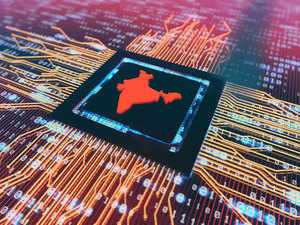 Getty Images
Getty ImagesDemand is consumption and investment. Sixty percent of GDP is private consumption. Investment has been anaemic much before Covid. The pre-Covid slowdown happened principally because consumption growth slowed down. The Covid crisis has savaged consumption further. It has also made investment even more risky because businesses will produce more only if there’s consumption demand. The govt is the only economic agent that can create demand on a massive scale.
Put it this way - without higher demand, guaranteed loans for MSMEs will be of little use to them. Why will they take on debt when there are no customers? Plus, businesses need direct support, like the government buying corporate bonds. Only then will investment, jobs, incomes pick up.
SO, HOW DOES GOVERNMENT CREATE DEMAND? MANY EXPERTS HAVE DONE ROUGH CALCULATIONS.
1] Forget fiscal prudence. Aim for extra spend of 9-10% of GDP. Go for debt monetisation
2] Big heads of this spend should be direct income transfer, wage support, infrastructure spend, buying even larger scale of NBFC/bank assets, buying of corporate bonds
3] Here are some numbers
a] Direct support: Income transfer through DBT of Rs 2 lakh crore + wage support for informal sectors of Rs 1.5 lakh crore = Rs 3.5 lakh crore
b] Infrastructure spend: Rs 4 lakh cr budgeted capital expenditure + Rs 50,000 crore for new healthcare facilities = Rs 4.5 lakh crore
c] Asset and corporate equity buying: Rs 2 lakh crore for buying NBFC/bank assets + NIIF buying equity of Rs 2 lakh cr = Rs 4 lakh crore.
d] Corporate bond buying: Govt sets up SPVs that issues bonds. RBI buys those bonds. With that cash, SPVs buy corporate bonds and create a liquid market for them. This will definitely attract other buyers. Experts estimate bonds of Rs 10-12 lakh crore can be bought & traded
e] Housing help: Rs 25,000 cr for NBCC to finish projects
4] Smart tax cuts. Lower GST on products like autos may boost demand. Small income tax cuts will likely just be saved by taxpayers
RISKS
1] Risk of economic catastrophe now higher than risk of economic instability in future
2] ECONOMIST SAJJID CHINOY MADE THIS ARGUMENT BY ANALYSING DEBT/GDP RATIOS:
a] Agreeing to sharply higher debt/GDP ratio, meaning a higher fiscal spend now, will produce higher nominal growth in near future & that will reduce debt/GDP ratio over time
b] Conversely, lower fiscal spend and therefore lower debt/GDP ratio will produce lower nominal growth, which is much worse for debt mgmt in medium term
Read More News on
Download The Economic Times News App to get Daily Market Updates & Live Business News.
Subscribe to The Economic Times Prime and read the ET ePaper online.
Read More News on
Download The Economic Times News App to get Daily Market Updates & Live Business News.
Subscribe to The Economic Times Prime and read the ET ePaper online.









 Get Unlimited Access to The Economic Times
Get Unlimited Access to The Economic Times
